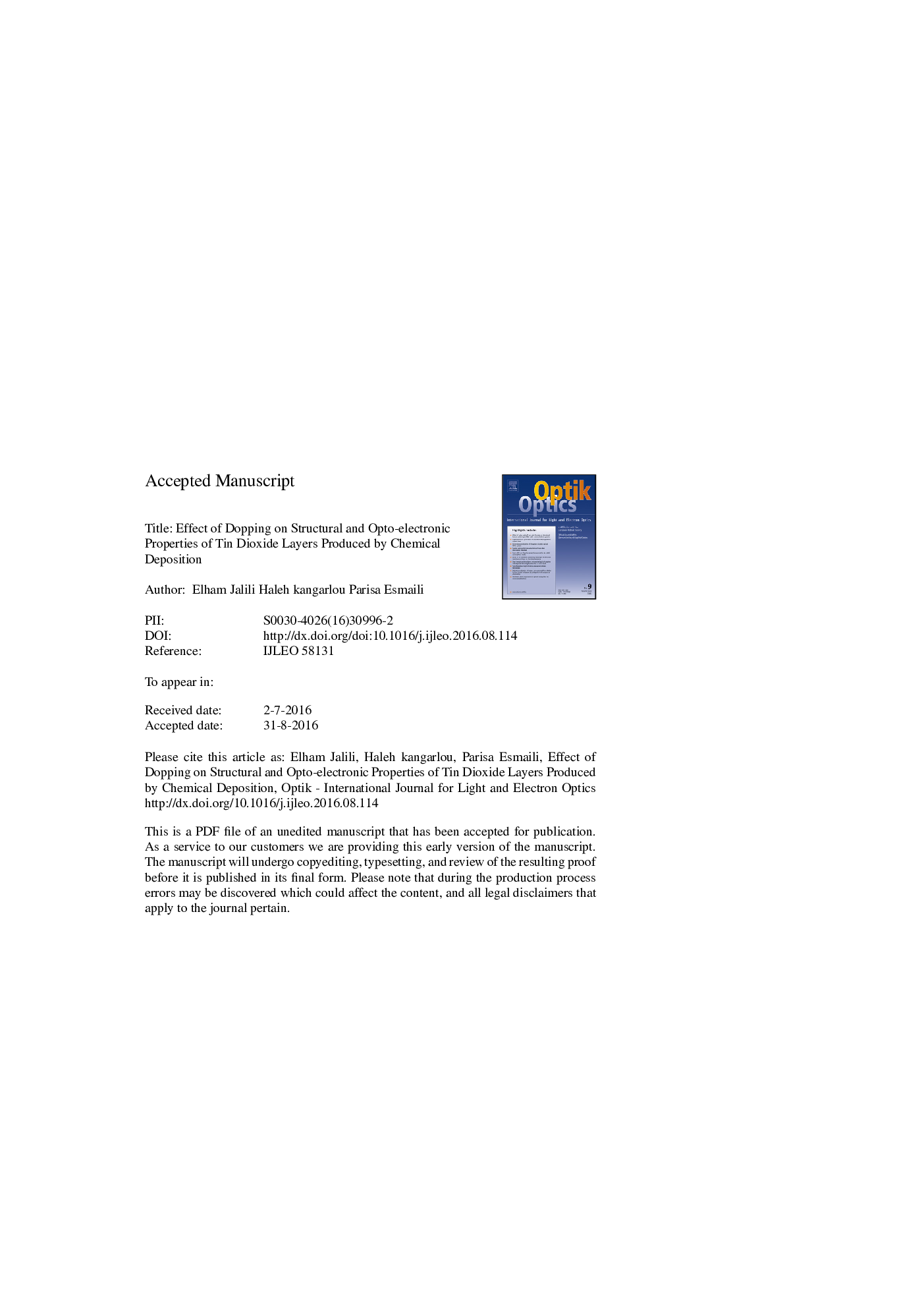| Article ID | Journal | Published Year | Pages | File Type |
|---|---|---|---|---|
| 5026322 | Optik - International Journal for Light and Electron Optics | 2016 | 19 Pages |
Abstract
Tin dioxide and dopped stannic oxide with different metallic impurities were deposited on glass substrates through chemical bath deposition method. Their morphologies, nano structures and crystalline properties were investigated by AFM, SEM and XRD analysis. Optical Reflectance of layers were measured by spectrophotometer in 220-2500Â nm wavelength range. Kramers-Kronig âmethod was employed for the reflectivity curves to obtain optical constants of the films. Electronic properties were calculated by full potential linearized augmented plane wave (FP-LAPW) method within density functional theory (DFT). In this approach, the generalized gradient approximation (GGA)in the form of the LSDA functional was used for the exchange-correlation potential calculations. Band gap structures and density of states were calculated. Dopping process changed morphology, nanoâ and crystal structures of layers. Copper nanoâparticles had important role on structural properties of Tin dioxide nanoâlayers. Also type of dopping impurity changed optical properties of Tin dioxide layers. Metallic impurities, specially copper, decreased the band gap energy and increased conductivity of produced layers. All results were in good agreement with each other. 1.2Â eV band gap energy calculated for Tin dioxide compound by DFT method.
Related Topics
Physical Sciences and Engineering
Engineering
Engineering (General)
Authors
Elham Jalili, Haleh kangarlou, Parisa Esmaili,
